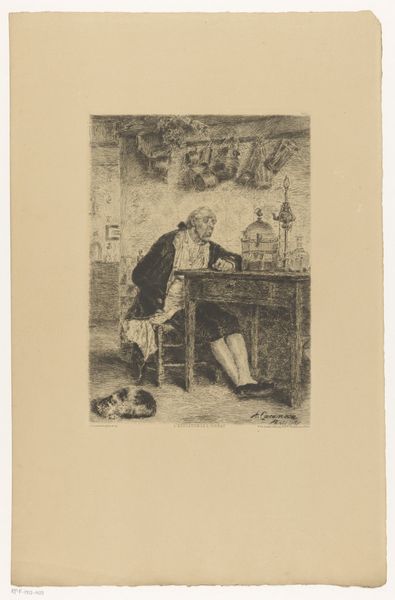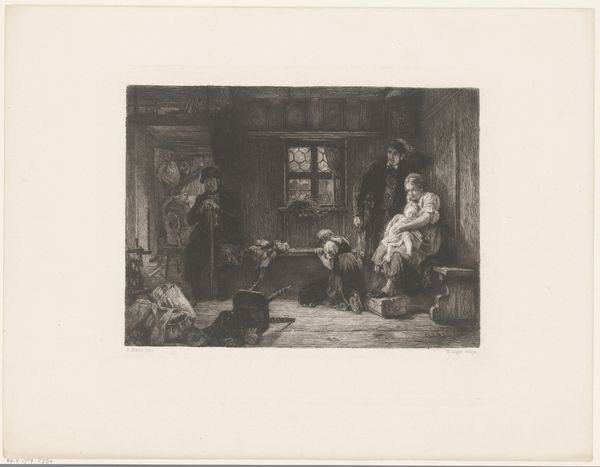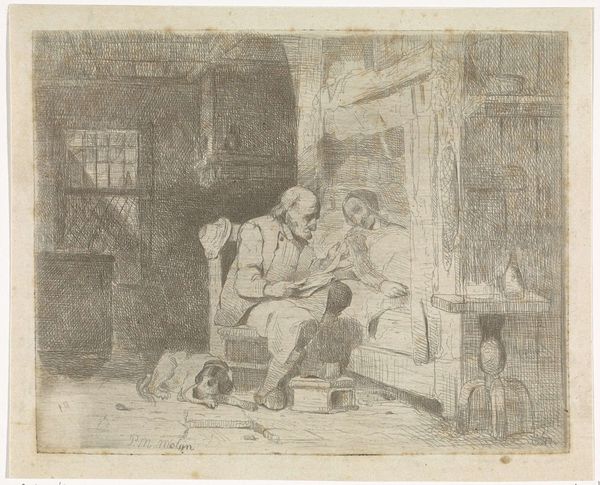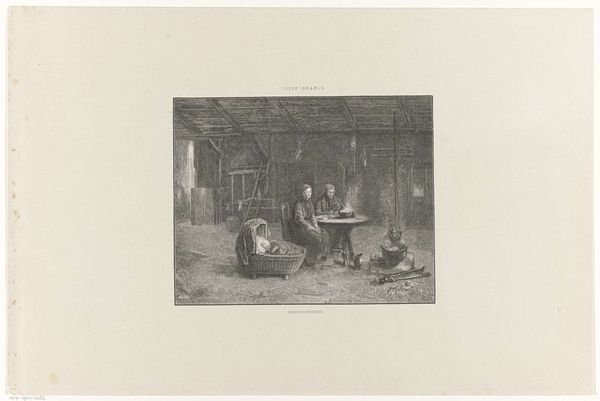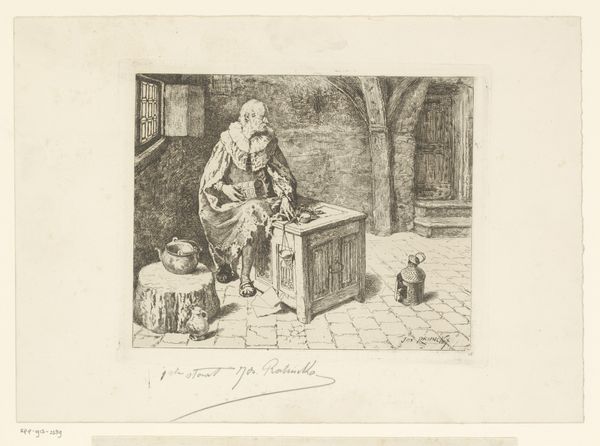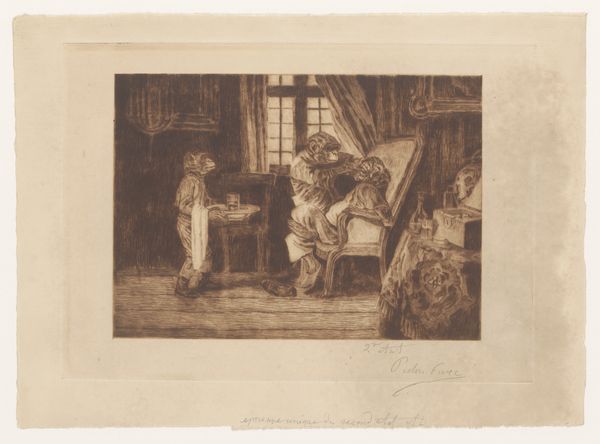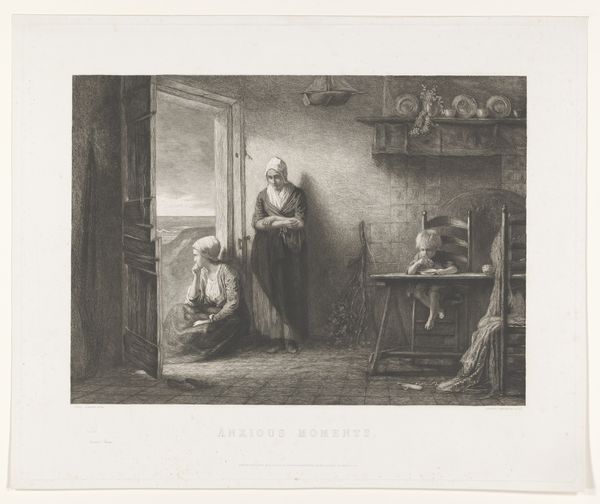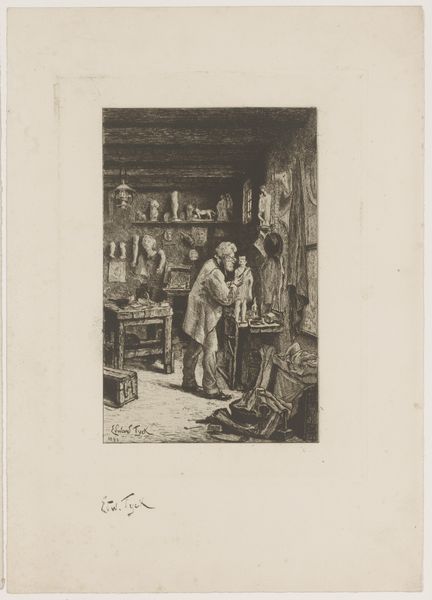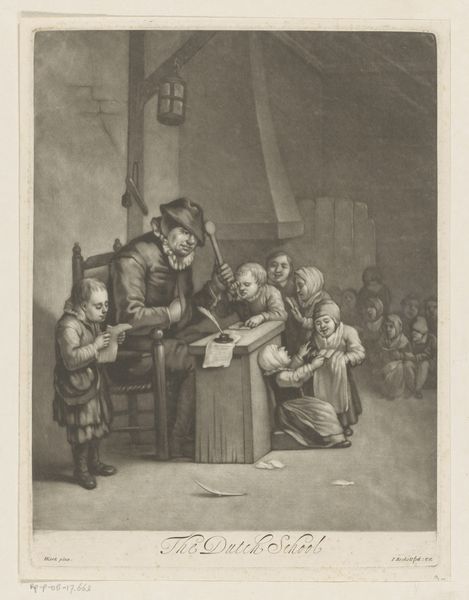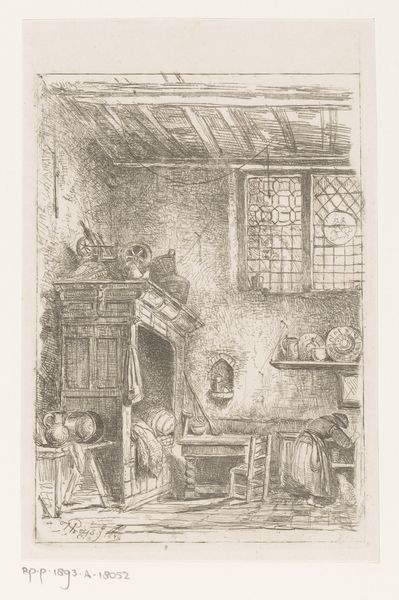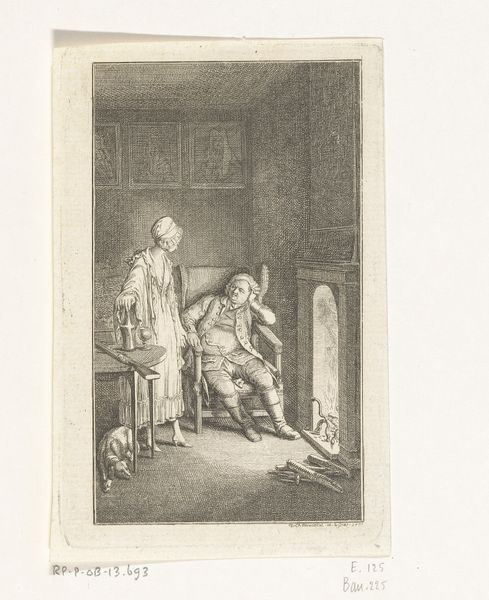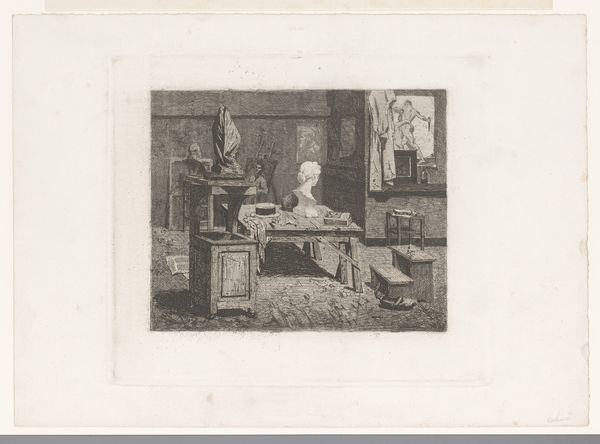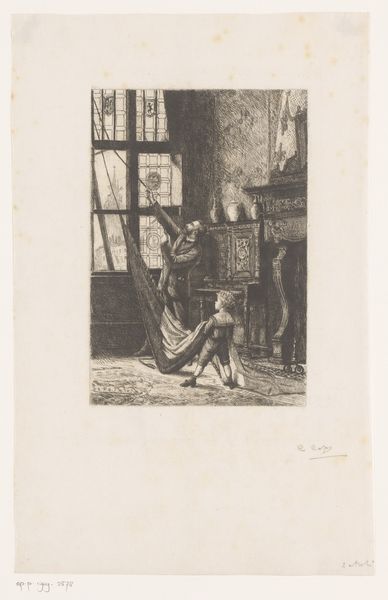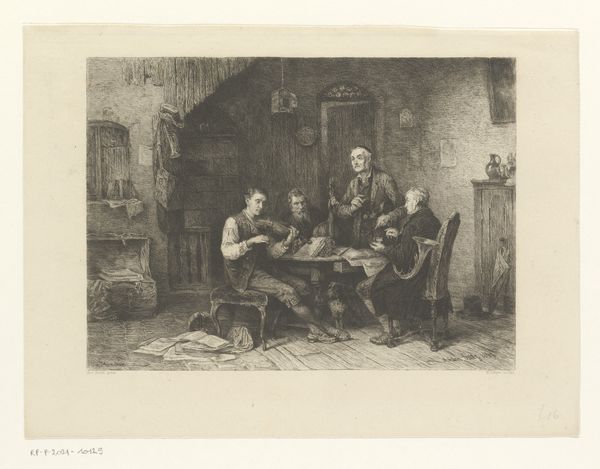
drawing, print, etching
#
portrait
#
drawing
#
narrative-art
# print
#
etching
#
genre-painting
#
realism
Dimensions: height 203 mm, width 253 mm
Copyright: Rijks Museum: Open Domain
Editor: Here we have "Oude man gezeten op een kist met weegschaal en kist," made sometime between 1870 and 1913 by Jos Ratinckx, an etching printed on paper. I’m struck by how much detail the artist was able to achieve. How do you see the work in terms of process and historical context? Curator: Well, immediately the etching technique demands attention. Think about the labor involved, the careful application of acid to the metal plate, the multiple stages to achieve those nuanced tonal gradations. How does this relate to the sitter? Is there an implied critique of labor, where we see an elder man performing what might be perceived mundane activities with weighing scales and locked chest? Editor: So you're suggesting that the way it's made influences what it's communicating about work, class and age? Curator: Precisely. The materials—metal, acid, ink, paper—become active participants in the narrative, speaking to systems of production and, potentially, even the man’s standing in that system. The print, traditionally a medium for reproduction, further complicates notions of value. What kind of market and economy were being developed that facilitated these types of narrative prints in a widely accessible manner? Editor: It’s interesting how analyzing the physical creation opens up new layers to its interpretation. It makes the medium a crucial part of understanding not just the image, but its entire message! Curator: Yes, the means of production always mediates our view of the world! Considering the artist’s tools and the historical circumstances redefines this quiet moment as something more profoundly material and socioeconomic.
Comments
No comments
Be the first to comment and join the conversation on the ultimate creative platform.
